Update since original post:
Some friends have asked me where I got these pictures. A good friend of mine, Cory Rintala, emailed them to me. When I was queried about their origins, a little googling unearthed this info: The photos are from a book called "Hungry Planet" by Pete Menzel. You can find out more about his photo essays on his website and through this article from NPR's Michele Norris.
Germany: The Melander family of Bargteheide
Food expenditure for one week: 375.39 Euros or $500.07

United States: The Revis family of North Carolina
(note the nutritional content on this table!)
Food expenditure for one week $341.98

Italy: The Manzo family of Sicily
Food expenditure for one week: 214.36 Euros or $260.11

Mexico : The Casales family of Cuernavaca
Food expenditure for one week: 1,862.78 Mexican Pesos or $189.09
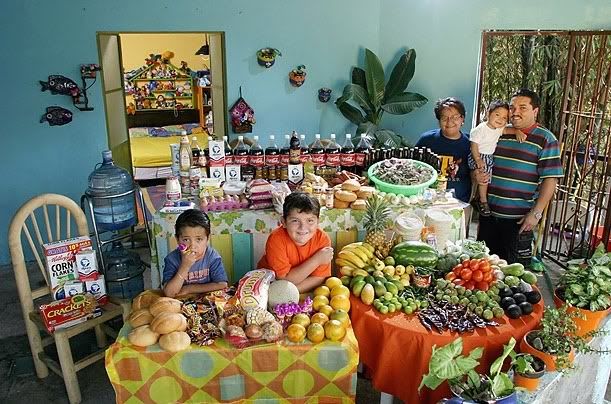
Poland : The Sobczynscy family of Konstancin-Jeziorna
Food expenditure for one week: 582.48 Zlotys or $151.27

Egypt : The Ahmed family of Cairo
Food expenditure for one week: 387.85 Egyptian Pounds or $68.53
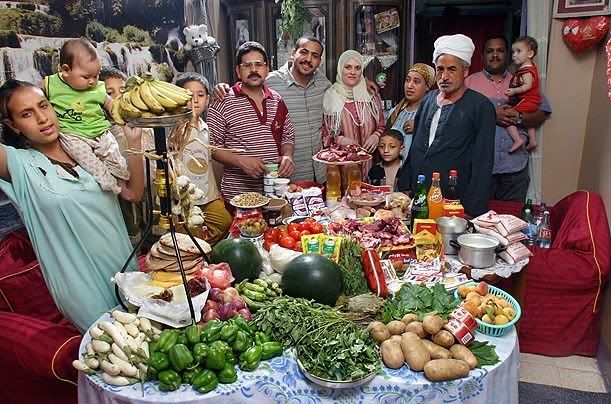
Ecuador : The Ayme family of Tingo
Food expenditure for one week: $31.55
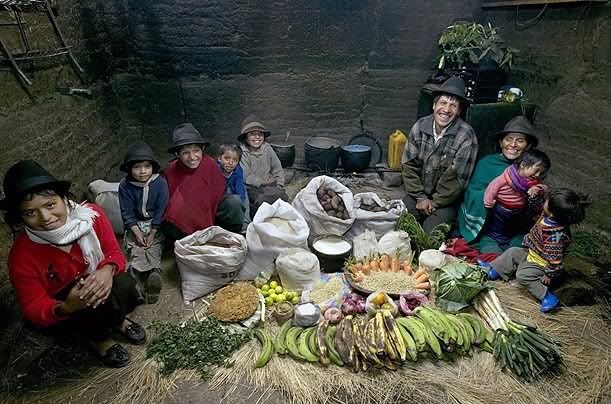
Bhutan : The Namgay family of Shingkhey Village
Food expenditure for one week: 224.93 ngultrum or $5.03
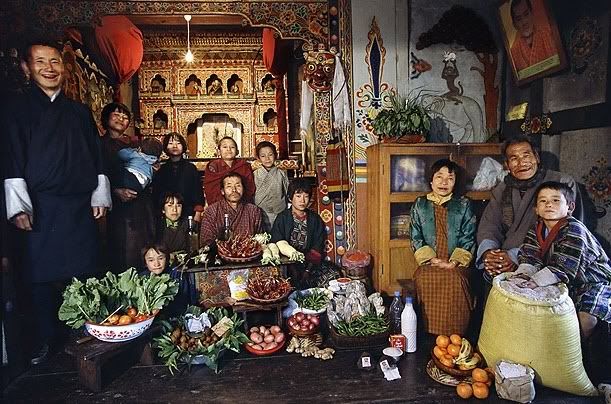
Chad : The Aboubakar family of Breidjing Camp
Food expenditure for one week: 685 CFA Francs or $1.23
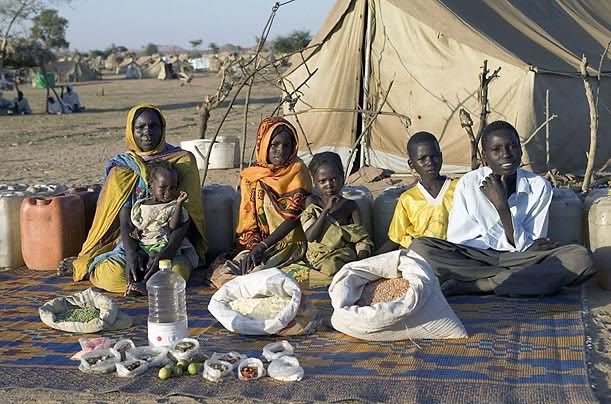



17 comments:
Very interesting. Where did you find this?
500$ a week. WOW! We spend like 260$ a month.
I think if they spent a little less money on their idols they'd have some more money for food in that one picture. Savannah
Before sending this it would have been helpful if you some data and how the figures and contents in photos were choosen.
There is no reference to the source of the information.
Very poor effort, would get a fail by most standards
Apparently whoever "anonymous" is does not read (or write for that matter) very well. The beginning of the post cites where the information was taken from: Peter Menzel's book Hungry Planet. On his website you can find out more about how he gathered this data. The following snippet describes the contents of the book and how he was able to amass such a breadth of information:
Each family's profile includes a detailed description of their weekly food purchases; photographs of the family at home, at market, and in their community; and a portrait of the entire family surrounded by a week's worth of groceries. To assemble this remarkable comparison, Menzel and D'Aluisio traveled to twenty-four countries and visited thirty families from Bhutan and Bosnia to Mexico and Mongolia.
Thanks Paul!
I think this was also published in TIME or the like a couple months back, too.
THANKS,
on the same planet,so large a gap in life standard.
We spend about $280 a month on food, too, in the U.S. The American family pictured? Disgusting. Absolutely disgusting.
All the American families who live healthy, live outside the Ghettos, do Not LIVE ON fast food!
Those of us who eat healthy, eat more vegetables, like the Sicilian, Polish, and Mexican, families!
Those Ghetto dweller Americans show a lack of education, and dietary planning!
It is rather sad that we have this great disparity in costs of food. But the people in the developed world do have greater choices of where to shop and the variety on offer. We have only ourselves to blame that we accept the high costs of food, when the producers of the food get so little for the crops they provide. The middlemen and the major stores make mega profits and then we accept this.
And to the biggot-"ghetto dwellers" seems to be a term that we have seen used by the uneducated and we hoped that it was erased from common useage decades ago.
Thanks for the wonderful effort in showing this data in a graphic form.
Definitely an eye opener. It reminds of the book, "The Jungle Effect," where a American doctor goes around the world and explores the healthy, nutritional habits of other cultures. It's unfortunate to look at the weekly food depiction of the typical American family. It's no wonder that obesity, cancer and diabetes is on the rise in the United States.
Definitely an eye opener. It reminds of the book, "The Jungle Effect," where a American doctor goes around the world and explores the healthy, nutritional habits of other cultures. It's unfortunate to look at the depiction of the America family's food choices. Even more unfortunate is how these processed foods are making the people of the United States very sick.
It is important to note that diets are just different and the cost of food varies. Because they spend little doesn't necessarily mean that they wanted more but could not afford it.
It's appalling that some of the people who are commenting above actually viewed these poignant photos and still are so mired in ignorance that they chose to write a racist comment. Shame on you Savannah/Anonymous - you viewed these photos and learned nothing.
An fascinating dialogue is worth comment. I think that it is best to write extra on this topic, it won't be a taboo subject but usually people are not sufficient to speak on such topics. To the next. Cheers casino real money
It is an interesting topic, people in the third world countries want better food but could not afford it. But the developed countries are self sufficient.
Post a Comment